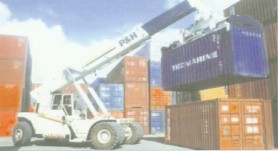Despite the protracted uneasiness in relations between Guyana and Suriname arising out of a still unresolved territorial claim by Guyana’s eastern neighbour the Corporation says that agricultural exports to Suriname almost trebled over the five year period between 2003 and 2008, increasing from $1 billion in 2003 to $2.9 billion two years ago.

The information produced by the Guyana Marketing Corporation (GMC) points to its increasingly important role as a key player in the local and international propagation of agro business opportunities in Guyana, promoting what it says are “lucrative opportunities” for investment in a range of agricultural commodities including “the livestock and dairy sectors,” fruits and vegetables, livestock and dairy products, aquaculture, forestry and dairy foods.
Strong support from all of the country’s political parties in Parliament for foreign direct investment and domestic investors in an open and competitive private sector economy is one of the critical indicators of a stable business climate identified by the GMC in its promotion of agro business investment opportunities in Guyana.
The GMC’s push to promote Guyana as an agro business investment haven coincides with aggressive official moves spearheaded by President Bharrat Jagdeo to generate a higher level of extra-regional investment and domestic and regional interest in agricultural production in an effort to both significantly reduce the Caribbean’s food import bill as well as to position the region to take advantage of a widely predicted short to medium term global food crisis.
Apart from the commodities listed by the GMC, in its full colour brochure, as areas of potential agro business investment the Corporation identifies the livestock and dairy and poultry sectors as areas in which government have made significant investment and which it says provide lucrative investment prospects. Government, the GMC says has made “significant investments” in the livestock and dairy sectors which have “enhanced the genetic stock of local herds.” This, the GMC says, has been coupled with “efforts….to improve quality pasture lands to facilitate the expected increase” in livestock.
Asserting that “Guyana produces more chicken than it consumes” the GMC says in its promotional brochure that local commercial poultry farms have been tested negative for the dreaded H1N1 ‘bird flu’, raising once again the issue of Guyana’s potential as a poultry exporter.
Export statistics published by the GMC point to significant increases in revenue earned from the export to Caribbean Community (CARICOM) countries of non-traditional agricultural products between 2003 and 2008. According to the GMC Guyana more than trebled the $412m which it earned from agricultural exports to St. Lucia in 2003, raking in $1.5 billion in earnings from agricultural exports in 2008. Food exports to Trinidad and Tobago increased from $4.7 billion in 2003 to $6 billion in 2008. In 2003 Barbados imported $2.3 billion in agricultural products from Guyana while earnings from agricultural exports to that country jumped to $4 billion in 2008.
Among the commodities which the GMC says possess “large growth potential” are jams, jellies, sauces, processed spices and fruit puree blends.
The GMC points to a number of support services and agencies which it says are geared to support the agro-business investment drive including export support services that provide “opportunities for air cargo service providers to expand flights for agricultural exports as well as for investments in cold storage facilities, post-harvest handling and packing services.”





